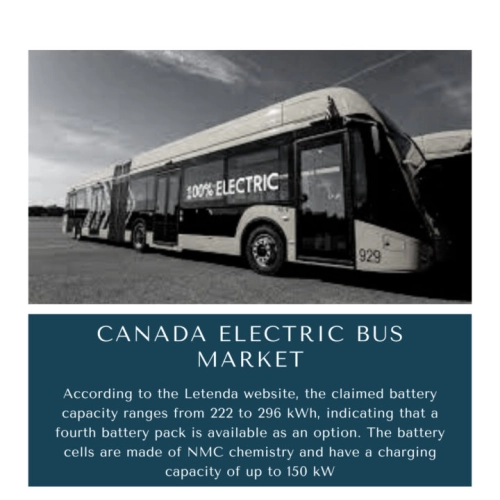
- Get in Touch with Us

Last Updated: Apr 25, 2025 | Study Period: 2024-2030
In order to allow shared infrastructure planning and development, more regulation is also required. Initiation phase of a state-of-the-art electric bus pilot project in Canada.
The buses and overhead chargers will cost around $7.6 million, with $3.6 million coming from Natural Resources Canada's Green Infrastructure Program to help the city construct, manage, and maintain the buses and chargers. Such incentives for the deployment of electric buses in the country tend to propel the electric bus market in Canada to new heights.

| S No | Overview of Development | Development Detailing | Region of Development | Possible Future Outcomes |
| 1 | Letenda unveils the Electrip electric city bus built for the harsh winter conditions in Canada | Letenda's all-electric city bus is the company's showpiece vehicle after six years of research and development. | Canada | This would enhance better Technological Controls |
| 2 | BYD Electric Buses Rollout Across Canadaâs Largest City | The Toronto Transit Commission will bring ten zero-emission 40-foot K9M battery-electric buses into operation, according to BYD Canada. | Canada | This would enhance better Technological Controls |
| 3 | Ottawa plans to become 1st Canadian city with a fully electric bus fleet | Through a proposed agreement with the Canada Infrastructure Bank (CIB) and the federal government, Ottawa hopes to replace its entire fleet of diesel buses with entirely electric vehicles by 2036. | Canada | This would enhance better Technological Controls |
| 4 | Canada, O Canada, Thy Electric Bus Investments | Over the next five years, the country will invest $2.75 billion in electrifying public transit. | Canada | This would enhance better Technological Controls |
It is critical to learn from early battery-electric bus (E-bus) trials in order to facilitate adoption and establish successful public policy. Furthermore, the present TCO for urban E-buses is expensive, and because operation is generally tender regulated with investment expenses covered, public finances must fund increased costs.
Despite the hurdles, operators are enthusiastic about expanding the usage of E-buses, indicating that businesses are prepared to support innovation when the financial risk is modest.
Lion Electric has been one of the most advanced solution provider in the used car requirements. The model eLionC is the only purpose-built all-electric Type C school bus. The body and chassis were created with the goal of providing the best possible performance.
The eLion8, on the other hand, is an all-electric midi/minibus that satisfies paratransit and public transportation needs. The eLion8 is large and includes unique features that give better security and accessibility to end-users. It was created and constructed exclusively for the paratransit market.
Letendo is a leading mobiliser of the various explorer oriented electric vehicle manufacturer requirements in the market. The 'Electrip' is around nine metres long and will accommodate up to 45 passengers, including 24 seats and six wheelchairs, that according Letenda.
Cummins will provide the e-drive and batteries, and three lithium batteries with a combined capacity of 222 kWh will be installed in the buses.
According to the Letenda website, the claimed battery capacity ranges from 222 to 296 kWh, indicating that a fourth battery pack is available as an option. The battery cells are made of NMC chemistry and have a charging capacity of up to 150 kW.
| Sl no | Topic |
| 1 | Market Segmentation |
| 2 | Scope of the report |
| 3 | Abbreviations |
| 4 | Research Methodology |
| 5 | Executive Summary |
| 6 | Introduction |
| 7 | Insights from Industry stakeholders |
| 8 | Cost breakdown of Product by sub-components and average profit margin |
| 9 | Disruptive innovation in the Industry |
| 10 | Technology trends in the Industry |
| 11 | Consumer trends in the industry |
| 12 | Recent Production Milestones |
| 13 | Component Manufacturing in US, EU and China |
| 14 | COVID-19 impact on overall market |
| 15 | COVID-19 impact on Production of components |
| 16 | COVID-19 impact on Point of sale |
| 17 | Market Segmentation, Dynamics and Forecast by Geography, 2024-2030 |
| 18 | Market Segmentation, Dynamics and Forecast by Product Type, 2024-2030 |
| 19 | Market Segmentation, Dynamics and Forecast by Application, 2024-2030 |
| 20 | Market Segmentation, Dynamics and Forecast by End use, 2024-2030 |
| 21 | Product installation rate by OEM, 2023 |
| 22 | Incline/Decline in Average B-2-B selling price in past 5 years |
| 23 | Competition from substitute products |
| 24 | Gross margin and average profitability of suppliers |
| 25 | New product development in past 12 months |
| 26 | M&A in past 12 months |
| 27 | Growth strategy of leading players |
| 28 | Market share of vendors, 2023 |
| 29 | Company Profiles |
| 30 | Unmet needs and opportunity for new suppliers |
| 31 | Conclusion |
| 32 | Appendix |